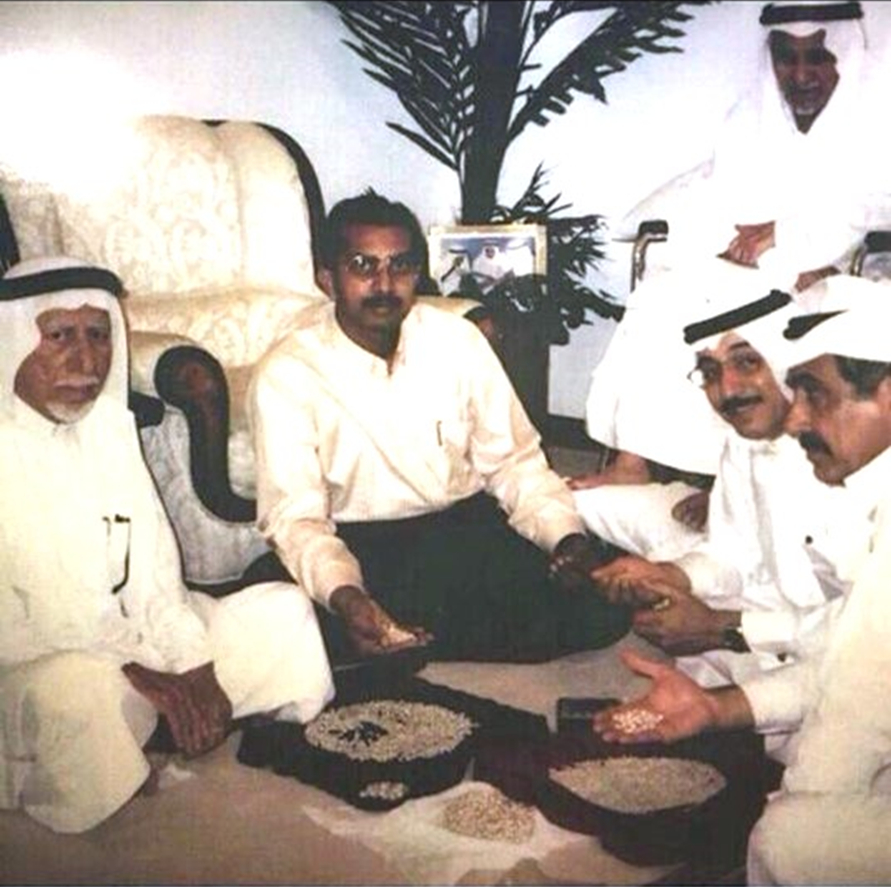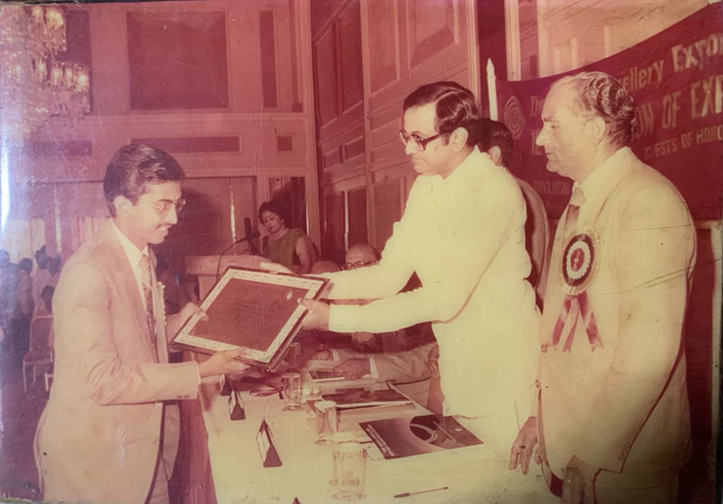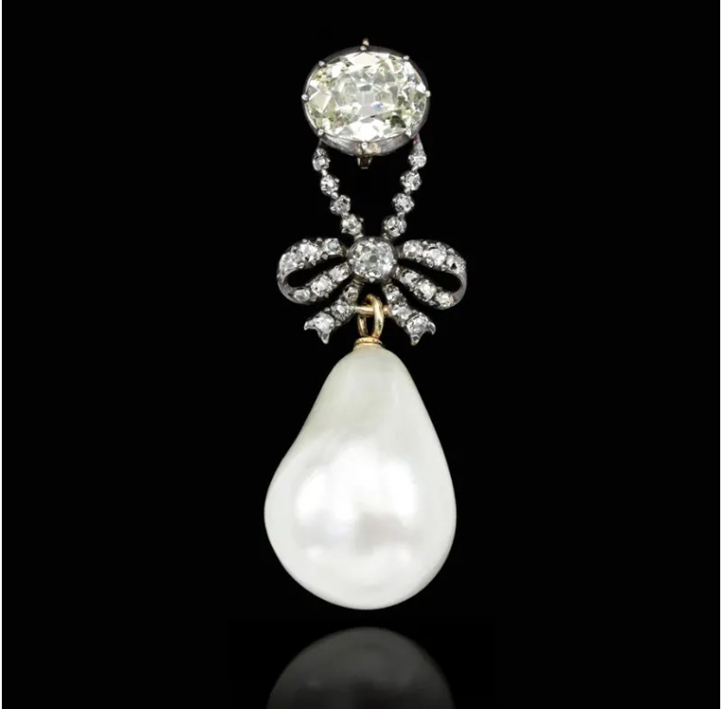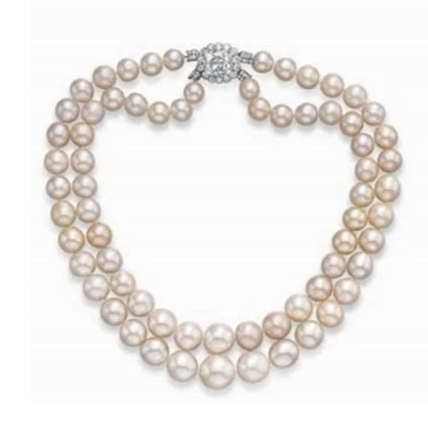Vishrut Kayvan Sanghvi, GIA Graduate Gemologist, Vishrut Gems
“Natural pearl business demands patience; it’s not a quick endeavor, but requires dedication and passion.”
Q1. As a fifth-generation entrepreneur, can you talk a little bit about the journey that Vishrut Gems has taken?
VS: My family’s journey into the world of pearl trading began in the early 19th century, spearheaded by my great-great-grandfather. Devoid of modern communication and transportation, those days we embarked on maritime expeditions to the Middle East to procure natural pearls nestled in the Arabian Gulf, historically known as Persian Gulf.
We would buy these pearls and bring them back to Mumbai, India, for sorting and drilling, as it was cost-effective to do this in India than it was in the Middle East. This strategic decision marked the inception of the pearl trading legacy in Mumbai.
We navigated in ships through bustling ports of Mumbai (then Bombay) and Karachi. We used to go to Dubai and Bahrain to procure the pearls. Bahrain, in particular, emerged as the top destination for the finest pearls, garnering acclaim in the global market. Despite geographical distances, we operated as a cohesive family unit, bound by a shared passion for our trade. One of our family members had established a foothold in Paris, the fashion capital of the world. From India, we catered to the demands of European jewelers, transforming Bahraini pearls into exquisite jewelry.
Today, as a fifth-generation descendant, I am proud to continue our family’s legacy in the natural pearl trade. Though our journey has seen its share of challenges and triumphs, our commitment to quality and tradition remains steadfast.
Q2. What factors contributed to the reputation and success of Vishrut Gems in the natural pearl industry? Which elements do you believe played a significant role in achieving this reputation and success?
VS: In our business, ethics and honesty are paramount. We are renowned for our commitment to quality control, particularly in selecting top-quality natural pearls, while maintaining competitive pricing. We firmly believe in sticking to what we know best, which is why we specialize exclusively in natural pearls and avoid branching out into cultured or South Sea pearls.
The focus on our core business has gradually built our reputation over time. We understand that in any business, maintaining ethical standards is crucial. That’s why every pearl we sell is authenticated by world-renowned laboratories such as GIA. This ensures transparency and trust in every transaction.
For the benefit of our customers, we always provide identification reports with each pearl purchase, allowing buyers to make informed decisions. This transparency not only educates buyers about the pearls they’re acquiring but also reinforces their confidence in our products.

Commentary by Vishrut: This picture was taken in the early 1980s and reflects the traditional way of buying and selling pearls, showing a significant quantity on display. It’s an intriguing image featuring my father alongside other prominent pearl traders. The essence of simplicity and elegance, crucial in the natural pearl trade, shines through in this picture.

Commentary by Vishrut: This is a photo of my grandfather, Hemendra Maneklal Sanghvi, during His Royal Highness Sheikh Rashid Al Maktoum visit to India circa early 1960s. His Royal Highness visited the Zaveri Bazaar to witness the natural pearls trade. Akin to gifting gold in Indian culture, in the Middle East, natural pearls hold cultural significance, often exchanged during weddings. This preference comes from historical higher production rates. My grandfather at time was a part of the pearl delegation that met His Royal Highness.

Q3. Can you provide an overview of the supply of natural pearls? What was the historical discovery of natural pearls, and what challenges do you currently encounter in the supply? Furthermore, could you share any opportunities you see arising from these challenges?
VS: Before Mikimoto came in the industry with cultured pearls in the 1920s, natural pearls were in abundant supply. They adorned the attire of maharajas and royal families in India and Western cultures, symbolizing wealth and prestige. However, the landscape changed with the advent of cultured pearls and the onset of World War I (1914-1918) and II (1939-1945). This, coupled with an influx of cultured pearls, posed a challenge as differentiating between natural and cultured due to limited identification technology was difficult. However, our dedication to natural pearls remained unwavering despite geopolitical turmoil and diminishing supply.
The discovery of oil in the Gulf region in the 1930s and 1940s further impacted natural pearl production. Oil extraction polluted oyster seabed, depleting the availability of gem-quality natural pearl. Laborers, uncertain about their livelihood in the pearl industry, gravitated towards the stable oil sector, exacerbating the scarcity of skilled workers. Today, the availability of gem-quality natural pearls remains exceedingly rare, posing challenges for dealers to fulfill specific orders. We no longer have fresh supplies of pearls; instead, they are merely changing hands from the old princely states or royal families in India, shaping the current landscape of the natural pearl trade.
It’s essential to note the limited supply of natural pearls and their inherent rarity, contributes to their enduring value. This value has sustained our business across generations.
Q4. Despite the ongoing supply challenges of natural pearls, what opportunities exist in the pearl trade today in the domestic and international markets?
VS: There is always an opportunity because the demand for natural pearls will always be there, and it remains strong even as the prices of other commodities like diamonds soften. Natural pearls and colored stones are unique in that their value tends to appreciate over time.
There are numerous opportunities on the client side, as many customers are eager to purchase natural pearls. However, the challenge lies in the supply chain – obtaining the pearls in the first place. We earn profits the day we acquire the pearls, not the day we sell them, as without purchasing natural pearls, we cannot make money.
Currently, there is no continuous supply, so we wait for someone to offer their pearls for sale. When such opportunities arise, we act swiftly to acquire them. Additionally, creating a necklace requires meticulous effort, as we must carefully match colors, sizes, and overtones to craft a piece which sometime can take close to two years.
Q5. Clients have varying requirements; some are constrained by budget, while others have none. How do you cater to these two different clienteles? Specifically, how much time, on average, is needed to assemble a three-strand natural pearl necklace?
Putting together a three or five-strand natural pearl necklace is a lengthy process due to the continuous collection required. We buy for 360 days in a year and sell five or six days a year, sometimes depleting our entire stock. The pearl business demands patience; it’s not a quick endeavor but one that requires steadfast dedication. However, passion is crucial. Crafting a stunning jewelry piece often attracts customers willing to pay a premium, recognizing the irreplaceable value of natural pearls. Ultimately, customer satisfaction, rather than budget, is paramount in our business philosophy.

Commentary by Vishrut: This large pearl, weighing 30 to 40 carats, is exceptionally rare and was part of the national treasury since the 1800s. Sotheby’s auctioned it for an astounding 36 million USD in 2011. It has been passed down through generations, it was acquired by an Austrian baron. Image credit: Sotheby’s

Commentary by Vishrut: This is the famous Baroda necklace. The original Baroda necklace had seven lines, but only two strands have been auctioned by Christie’s
Q6. Can you talk to us about the cultured pearls market and the opportunity there. Why is it important for Vishrut Gems to not cater to this market?
Yes, there’s indeed a market for cultured pearls, including varieties like South Sea, Akoya, and Chinese freshwater pearls. However, our focus remains on natural pearls. We’re committed to maintaining our reputation for offering only natural pearls, aligning with our values and principles. Additionally, we choose to avoid practices that harm living beings, such as the extraction of pearls from oysters, opting instead to prioritize sustainability and ethical sourcing. It’s essential for us to stay true to what we’re known for: natural pearls.
There’s an intriguing history involving Cartier that I’d like to share. Back in 1910, or perhaps 1900, Cartier sold two strands of natural pearls to a lady who held a deep affection for them. She valued natural pearls so much that she exchanged them for an entire mansion on Fifth Avenue, New York. This mansion, which still stands today, serves as Cartier’s headquarters in New York. The significance lies in the consumer’s perception that wearing natural pearls, akin to natural diamonds, holds importance. This sentiment has sustained our business over the years, even amidst challenges.
Q7. Can you elaborate on the process of differentiating between natural and cultured pearls – how complex or simple it is, and the significance of various technologies used in identification?
VS: It is extremely difficult to distinguish between cultured and natural pearls. In such cases, the safest route is to seek identification reports from renowned laboratories like GIA or other globally recognized institutions. Each pearl requires proper documentation to ensure its authenticity, especially for luxury items like natural saltwater pearl necklaces. Without the correct paperwork, there’s a risk of encountering issues down the line. As a business, we prioritize providing our clients with identification reports from reputed laboratories, with GIA being our preferred choice. These laboratories utilize advanced technologies such as X-ray tomography for authentication and even age dating. Investing in pearls, or any valuable item for that matter, without proper certification can pose significant risks. Independent certification is crucial to safeguarding your investment and providing peace of mind for both buyers and sellers.
Q8. Could you share with us some memorable experiences that you had while pursing your GIA Graduate Gemologist program in Carlsbad?
VS: Those were some of the best days of my life. Meeting students from all over the world opened so many cultural insights and networking opportunities. However, one of the highlights was undoubtedly the Richard T. Liddicoat Gemological Library and Information Center in Carlsbad. It was a treasure trove of information, providing invaluable resources for learning and understanding the history and current state of affairs. Accessing that wealth of knowledge was crucial for us as we delved into our passion and sought to expand our understanding.
Q9. Looking ahead, how do you envision the role of natural pearls, evolving in the global jewelry market, and how does Vishrut Gems plan to adapt to these changes?
VS: What I’ve observed is a robust demand for natural pearls, driven by many individuals who seek the elegance and authenticity they offer. This is evident in various high-profile events where natural pearls are prominently showcased by affluent individuals, reflecting the current market trend. Unlike other gemstone that need to be mounted on a metal , natural pearls are typically worn directly against the skin offering a distinct sensation of coolness and permanence This inherent connection with nature is highly valued, especially among women seeking a sense of serenity and grace in their adornments. We always advise our clients to treat pearls with care, emphasizing their organic nature and delicacy compared to harder gemstones like diamonds. While there exists a challenge in its limited supply and procurement process, the demand for natural pearls remains strong and promising.

